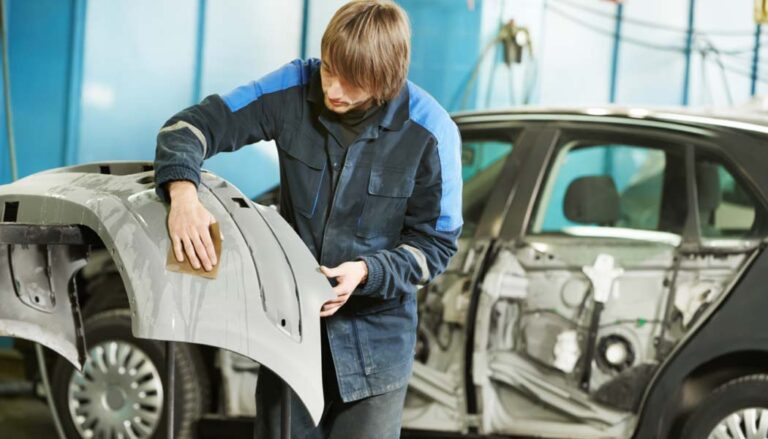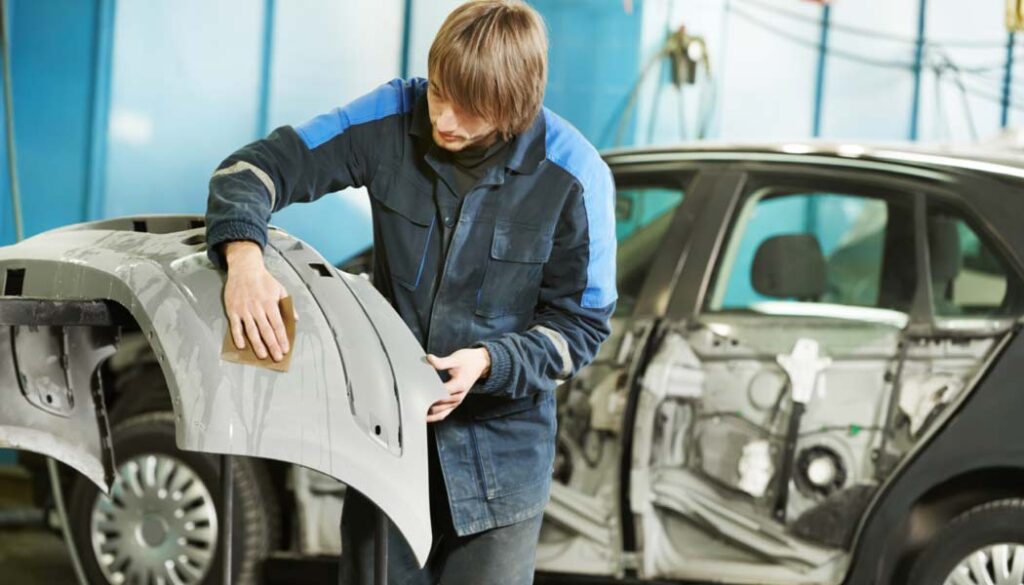
What Primer to Use on Plastic Bumper? – Get the Clear Idea
Are you tired of looking at a dull, faded plastic bumper on your car? Plastic bumpers are a popular choice in modern car designs, but they are notorious for losing their shine over time. To restore its appearance, you can paint the bumper. And before that, you may have this question in your mind – what primer to use on plastic bumper?
Adhesion promoting primer is the ideal primer to use on plastic bumpers. Plastic primer is also available as an affordable option. You can also choose high-build primer for car’s plastic bumper.

To make things easier for you, we have put together a comprehensive guide that will help you understand the different types of primers available and select the perfect one for your car’s bumper. So, sit back and relax as we take you through the ins and outs of primers for plastic bumpers.
Do You Need Primer for Plastic Bumper?
Primer is important for painting a plastic bumper for several reasons. First, plastic is a non-porous material that can be difficult for paint to adhere to. A primer is specially formulated to bond with the plastic surface and create a surface that is more receptive to paint. Without a primer, the paint may not adhere properly to the plastic surface, resulting in a rough, uneven, or flaking finish.
Second, a primer can help to smooth out any imperfections in the plastic surface, such as scratches, dents, or other damage. This creates a more even surface for the paint to adhere to, resulting in a smoother, more professional-looking finish.
Third, a primer can help to protect the plastic surface from the elements, such as sunlight, moisture, and temperature changes. This can help to prevent the plastic from becoming brittle, cracking, or fading over time.
So, using a primer is an essential step when painting a plastic bumper to ensure a high-quality, long-lasting finish that looks great and provides reliable protection for your vehicle.
What Primer to Use on Plastic Bumper?
When it comes to painting a plastic bumper, using the right primer is necessary to ensure the paint adheres properly and doesn’t peel or flake off over time. Plastic bumpers are made of materials such as polypropylene or ABS, which can be challenging to paint due to their low surface energy and flexibility.
To prepare the plastic bumper for painting, you’ll need to clean it thoroughly and sand it with fine-grit sandpaper to create a rough surface that the primer can adhere to. Once you’ve done that, you’ll need to choose the right primer for the job.
There are a few types of primer that can work well on plastic bumpers.
Adhesion Promoting Primer: This type of primer is specifically designed to bond to plastics and other low surface energy materials. It contains chemicals that create a stronger bond between the plastic surface and the paint.
Plastic Primer: This type of primer is also formulated to bond with plastic surfaces, but it’s not as effective as an adhesion-promoting primer. However, it may be a good option if you’re working with a tight budget.
High-build Primer: If the plastic bumper has significant damage, such as cracks or dents, a high-build primer can help smooth out the surface and create a more even finish. This type of primer is thicker than other types, so it can fill in small imperfections.
When selecting a primer for a plastic bumper, make sure to choose one that is compatible with the type of paint you plan to use. It is vital to use an adhesion-promoting primer or plastic primer when painting a plastic bumper. A high-build primer can also be used to fill in small imperfections.
Do You Need Special Primer for Plastic Bumper?
Yes, a special primer is required for plastic bumper repair. There are various types of plastic primer available in the market, and they are specially formulated to work with different types of plastic materials.
Some of the common types of plastic primer include adhesion promoter primers, plastic primers, and high-build primers. These primers are specifically designed to create a strong bond between the plastic surface and the paint, ensuring that the paint adheres properly and doesn’t peel or flake off.
It’s important to choose the right primer for the type of plastic used in the bumper. Using the wrong type of primer or applying it incorrectly can result in poor adhesion, uneven paint finish, and other problems that can compromise the appearance and durability of the repair.
What Is the Best Type Primer to Use for Plastic?
The best type of primer to use for plastic depends on the type of plastic being primed and the specific project requirements.
For example, if you are working with a non-porous plastic like PVC or ABS, a solvent-based primer such as a chlorinated solvent-based primer or a tetrahydrofuran-based primer may work best. These types of primers are designed to soften the surface of the plastic, allowing the paint to adhere better.
However, if you are working with a porous plastic like polyethylene or polypropylene, an adhesion-promoting primer may be more effective. These types of primers contain special additives that help the paint to bond with the plastic surface.
Can I Use 2K Primer on Plastic Bumper?
2K primer can be used on plastic bumpers. Before applying the 2K primer, it is important to thoroughly clean and prepare the surface of the bumper. This may involve sanding or using a plastic adhesion promoter to ensure good adhesion of the primer.
Follow the manufacturer’s instructions carefully, as 2K primers typically require mixing with a hardener and may require specific application techniques. Additionally, it is important to use proper safety equipment such as gloves and a respirator when working with 2K primers.
How to Select the Best Primer for Plastic Bumper?
Whether you’re repairing a scratch or giving your ride a whole new look, selecting the right primer is the key to a successful paint job. So, how do you choose the best primer for plastic bumpers?
First things first, choose a primer specifically designed for plastic. Plastic can be a bit tricky to paint, as it’s not as porous as other materials. That’s why using a specialized primer is important.
Next, consider the type of paint you’ll be using. Different paints require different types of primers. For example, if you’re using enamel paint, you’ll want to use an enamel primer. If you’re using lacquer paint, you’ll want to use a lacquer primer. Make sure to read the labels carefully and choose a primer that’s compatible with your chosen paint.
Another important factor to consider is the condition of your bumper. If it’s brand new, you’ll need a different primer than if it’s scratched or damaged. If your bumper has scratches or damage, you’ll want to use a primer that’s engineered to fill in those imperfections.
Finally, don’t forget to consider the color of your paint. If you’re painting your bumper a light color, you’ll want to use a light-colored primer. Similarly, if you’re painting your bumper a dark color, you’ll want to use a dark-colored primer. This will help the paint go on smoothly and evenly.
Final Verdict
Choosing the right primer for your plastic bumper is very important to achieving a durable and long-lasting finish. You will need to choose a primer that is best for plastic. Primers designed for other surfaces will not work on plastic bumpers.
Consider factors such as adhesion and flexibility when making your selection. Proper preparation and application techniques are also important for achieving the best results.
